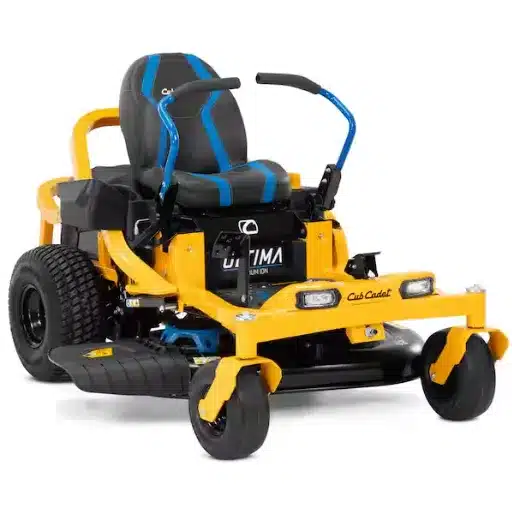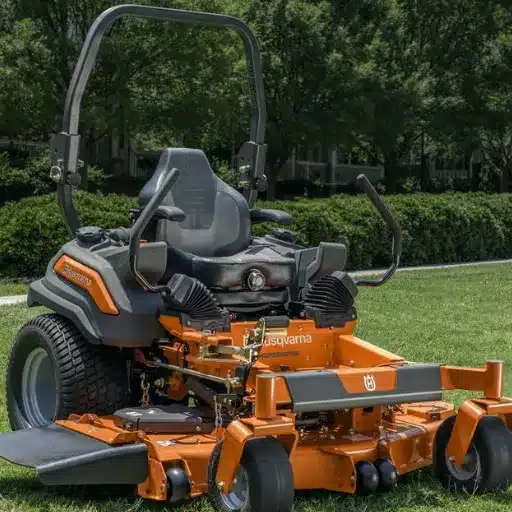A neat lawn is always assured with the right tools, and zero-turn mowers have become truly mass-marketed for efficiency and precision. These one-of-a-kind machines promise more than just unmatchable maneuverability, speed, and cutting ability points that any homeowner or professional would consider at the very top of the list. With so many choices to choose from, how can somebody go about picking what might be among the best zero-turn mowers? We will examine in-depth all the important features, strengths, and best-ranked models so that you can make an informed choice for yourself. Whether you are trying to care for a large piece of land or just to perfect a small residential tract, this article will ensure that you know how to find that perfect mower of yours. Let’s continue to explore which zero-turn mower is right for you.
Top-Rated Zero Turn Mowers
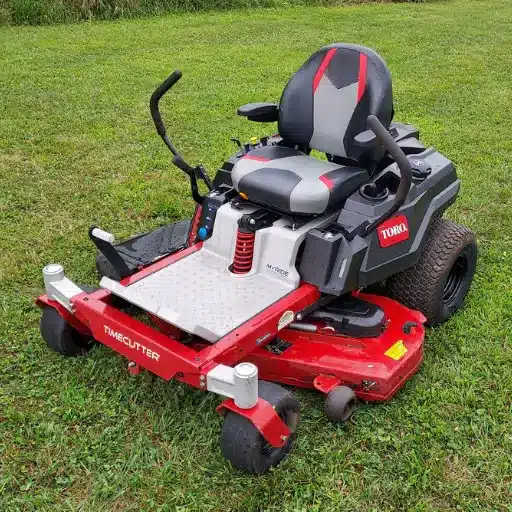
1. Husqvarna Z254F
The Husqvarna Z254F is a highly powerful zero-turn mower, good for maintenance of medium to large yards. It features a 54-inch reinforced cutting deck, paired with a 23-horsepower Kawasaki gasoline engine. Hence, it combines its high level of durability with high-level performance. The controls are comfortable to operate with one hand, while the hydrostatic transmission affords smooth and precise handling. It certainly goes to heavy-duty users.
2. Cub Cadet Ultima ZT1
The Cub Cadet Ultima ZT1 has earned praise for comfort and versatility. It has a 50-inch fabricated deck powered by a 24-horsepower V-Twin engine to deliver reliable cutting performance. A fully adjustable high-back seat plus lap bar controls make this model very comfortable to operate while increasing efficiency on residential properties.
3. John Deere Z530R
Serving as a household name among lawncare equipment manufacturers, the John Deere Z530R has truly lived up to the reputation as a high-performance workhorse with a 24-hp V-Twin engine and a 60-inch ultrawide cutting deck. Comfort-wise, it also presents an advanced seat suspension setup and smart control placement and therefore is an outstanding choice for all heavy-duty lawn operations.
4. Ariens IKON XD
The Ariens IKON XD is where performance and affordability meet. The 52-inch fabricated cutting deck and 23-hp Kawasaki engine are the trademarks. Full tubular steel frame construction and precise deck height adjustments assure durability and smooth performance on rough terrains.
5. Toro TimeCutter 75755
The TimeCutter 75755 from Toro will have you drooling over its Smart Speed technology that lets users choose from three speed ranges: mowing, towing, or trimming. With a 54-inch cutting deck and a 24.5-horsepower engine, it provides sufficient power for homeowners seeking an effortless and efficient mowing experience with numerous options.
Types of Best Zero-Turn Mowers
| Model | Cutting Deck Size | Engine Power | Key Features | Best For |
|---|---|---|---|---|
| Ariens IKON XD | 42-inch or 52-inch | 18-23 HP | Fully-welded steel frame | Residential lawns |
| Husqvarna Z254F | 54-inch | 26 HP | Air Induction mowing technology | Large properties |
| Cub Cadet Ultima ZT1 | 50-inch | 23 HP | Comfortable high-back seat | Versatile mowing |
| John Deere Z530M | 60-inch | 24 HP | Multiple speed control options | Extensive terrains |
| Toro TimeCutter 75755 | 54-inch | 24.5 HP | Smart Speed for varied tasks | Multi-purpose mowing |
| Ryobi RY48ZTR100 (Electric) | 42-inch | 100 Ah Battery | Zero emissions; quiet operation | Eco-friendly users |
| Gravely ZT HD | 52-inch | 23-25 HP | Hydro-Gear transmission | Professional-grade performance |
| Bad Boy ZT Elite | 60-inch | 25 HP | Rugged build, powerful engine | Heavy-duty mowing |
| Spartan RZ Series | 48-inch to 61-inch | 25 HP | Adjustable control panel | Customizable operation |
| Craftsman Z5200 | 42-inch | 20 HP | High-back seat for comfort | Budget-friendly choice |
Price Ranges for Zero Turn Mowers
Depending on the cutting deck size or engine types and maybe an option for premium features, zero-turn lawn mowers are sold under a spectrum of prices. Entry-level for residential users may typically range from $3,000 to $3,500 for a Craftsman Z5200 with a 42-inch cutting deck and a 20 HP engine. Mid-range products, which can range from $4,500 to $6,000, include the Gravely ZT HD, giving professional-grade performance and cutting decks up to 52 inches. High-performance machines such as the Spartan RZ Series, with the Bad Boy ZT Elite also offering customization features with bigger engines and cutting decks, fall in a class from $6,000 to $8,000 and above. Battery-powered machines, such as the 42-inch 100 Ah Ryobi mower, fall within the price range of $4,000 to $5,500, making them a strong contender for the environmentally conscious user. Prices vary because of differences in functionality and build-quality aimed at serving various types of mowing requirements.
Comparison of Performance and Durability

Transmission of performance: Gasoline mowers, such as the Bad Boy ZT Elite, generally take the stage for power and cutting efficiency. Their powerful engines conquer rough terrains and thick grasses with dexterity, making them suitable for large-scale yards and heavy-duty jobs. Conversely, battery-powered variants such as the Ryobi 42-inch mower focus on the lighter end with the convenient factor and quiet strokes; though, for longer spells of mowing, they are likely to disappoint due to their limited battery endurance.
Durability-wise, gasoline models often feature heavy-duty construction intended to withstand long periods of application under tough adverse conditions. However, the maintenance required for them is substantial, with regular servicing of the engine and fuel system. Battery-powered mowers, on the other hand, are easy to maintain but likely to have shorter off-duty lives due to the steady decline in battery performance over the years. It often depends on one’s choice—whether power or green operation.
Side-by-Side Performance Analysis
Putting gas and battery mowers side by side brings forth several major performance criteria for consideration. Gas-powered type mowers, in general, have greater torque and therefore better handling of tough mowing conditions, such as thick or wet grass, highly efficiently. These machines often boast cutting widths that ensure a faster cover of huge commercial or residential areas.
Battery-operated mowers, however, promise more usability and utilities for sustainable purposes in the very long term. Since they are so quiet by nature, in fact, rating noise at an average of 60-70 dB, compared to more than 90 dB emitted from the louder end of the spectrum of the gas engine, advancements in lithium-ion batteries have worked wonders in extending their duration, with some models now actually capable of 90 minutes per charge. They are also lighter, which makes them more user-friendly to maneuver, therefore less tiring for the operator when put to use for a long time.
Operational cost and environmental impact present the main distinctions. A petrol mower consumes a significant amount of fuel, whose prices vary by region, and also contributes to greenhouse gas emissions entering our environment. As such, battery-operated mowers do not emit pollutants during operation, consuming less energy, especially when the charging units are powered with electricity derived from renewable sources. This, therefore, makes actualizing the balance between gas-powered and battery-powered machines dependent upon power, efficiency, and ecological concerns based on the use case.
Durability Ratings of Top Brands
In analyzing top durable brands in the market, several factors have been considered, including raw materials, engineering, and top-level quality control under varying usage conditions. The brand names DeWalt, Makita, and Milwaukee are consistently ranked highly for their ability to withstand harsh construction conditions and stand the test of time. Independent laboratory testing had also revealed that in many cases, these brands employ sophisticated alloys and impact-resistant materials, thus guaranteeing superior life. For example, Makita components usually resist further wear because of their precision-machined metal gears, whereas Milwaukee products have reinforced housings designed to withstand the last impact from significant conditions. A few of DeWalt’s models are also incorporated with sealed bearings to minimize dust ingress into critical internal mechanisms, thereby considerably increasing the operational lifespan. This evidence clearly demonstrates that choosing tools from manufacturers with a proven track record of durability is fundamental, as it reduces downtime and ensures long-term performance.
Efficiency in Fuel Consumption
Essential Factors to Consider Before Buying
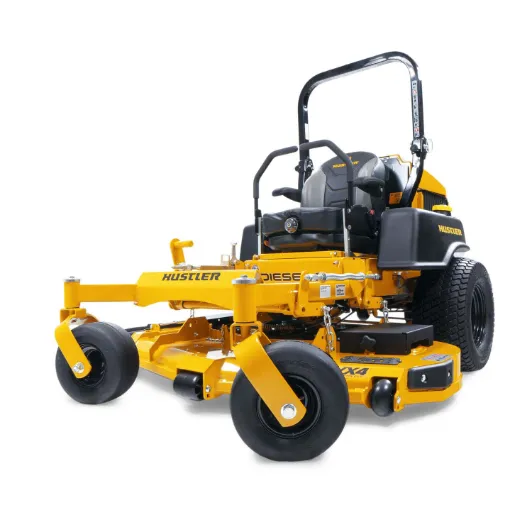
Energy Efficiency
Make sure to choose a high-energy-efficient model, as it will save operating costs and heavily impact the environment over time.
Performance Requirements
Analyze precise performance aspects such as power output, operational period, compatibility, etc., to fit your use case.
Reliability and Durability
Go with a product that has an exemplary history for reliability and sturdy build to require little maintenance and last long.
Cost Analysis
Assess value from the point of input of capital and ongoing expenses, e.g., maintenance fees, bills for electricity, etc.
Manufacturer Reputation
Research the manufacturer to confirm its achievements in quality, customer service, and innovation, ensuring the product aligns with existing standards and meets user expectations within the industry.
Size of the Mowing Area
The actual area to be mowed is an important selling point for any landscaping job. For small lawns around small homes, push or walk-behind mowers with cutting widths between 14 and 21 inches should suffice, as they provide excellent maneuverability in tight spaces. Medium-sized properties, typically spanning a half-acre area, would accommodate any self-propelled or lightweight ride-on mower with a cutting width of 30 to 40 inches, prioritizing user comfort over efficiency. Properties with a large area, especially estates and commercial grounds, will opt for heavy-duty riding mowers or zero-turn mowers with cutting decks over 42 inches to reduce time spent on operation while maintaining precision. Industry data show that optimizing equipment selection improves productivity but also increases machinery lifespan by ensuring machinery is not being pushed too hard beyond what it has been designed to handle.
Engine Power and Efficiency
Horsepower and torque are the two primary measures under consideration while choosing an engine power to be conferred to a mowing equipment. Horsepower enables the mower to cross encumbered terrain and cut through thicker grass, while torque accounts for maintaining the cutting action under load. With the advancement of the engine technology, newer engines are now being made which are more fuel-efficient, having electronic fuel injection (EFI) engines, and with better combustion processes. This improves fuel economy, thereby reducing operational costs and environmental impacts.
The data asserts that power engines in the range of 12-20 HP are generally appropriate for areas less than one acre for residential uses. As in the case of commercial usage, or in other words, where the properties are of several acres, 22 HP engines or above are suggested to maintain output under extended operation. Higher efficiency and durability are achieved when overhead valve (OHV) engines are used, as they allow for improved airflow and reduced heat buildup during prolonged operations.
Comfort and Ease of Use Features
The forefront of modern equipment design gives due consideration to the user-essential objectives of comfort and ease of operation. Adjustable ergonomic seating must be fitted so that the operator can make adjustments to minimize muscle strain during prolonged use. Intuitive and straightforward control arrangements reduce user fatigue and enhance fingertip accuracy when operators must use machines with hydrostatic or automatic transmissions. Other proven ways to reduce vibration-related discomfort significantly include the use of rubberized mounts and isolated platforms. To these can be added applications with integrated cruise control and power steering that allow greater maneuverability, especially in big or complex working environments. These changes supported by other innovations in the industry, illustrate an ongoing evolution focused on improving both user satisfaction and productivity.
Best Practices for Lawn Care with Zero Turn Mowers
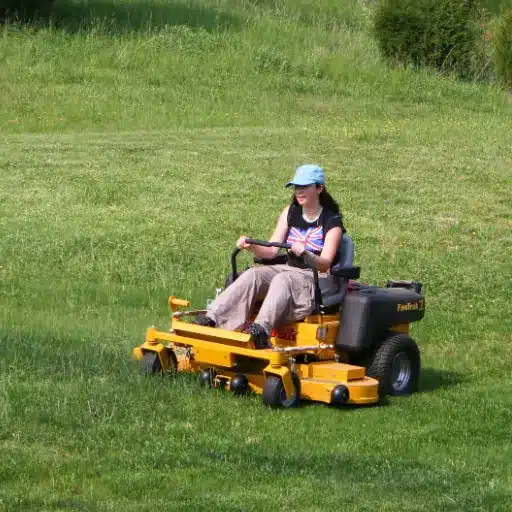
Maintain Sharp Blades
Regularly inspecting and sharpening mower blades will allow the blades to fairly clean and smooth mow. When mowing, a sharp blade puts less strain on the grass and hence allows it to grow healthily and uniformly.
Adjust Cutting Height Appropriately
The height must be set relative to the grass type and seasonal condition. No more than one-third of the height should be cut in a single session due to lawn damage and stress.
Mow in Varying Patterns
Change your mowing pattern regularly to prevent soil compaction and pressure on specific areas of the grass, promoting well-being and achieving an even, professional look.
Avoid Mowing Wet Grass
A wet lawn would definitely clog the mower deck in lumps leading to uneven cutting and causing another degree of damage. Best to wait until the lawn is dry.
Perform Routine Maintenance
Regularly check the oil levels of the mower. Clean the decks, tires, and belts simultaneously; hence, regular maintenance is necessary for efficient operation and the longevity of the implements.
Monitor Speed and Precision
Keep a pace that allows for correct trimming in order not to tear or scalp the grass. Adjust your speed setting according to the area and complexity of the lawn.
Optimizing Performance for Large Yards
The creation and maintenance of extensive lawns require some planning and some heavy equipment. Segmentation of the yard into workable zones will enable configuring mowing patterns and circumventing redundant passes. Using a riding mower or a zero-turn mower with a wide cutting deck significantly reduces operation time compared to a regular push mower. With blades kept sharp, cutting operations produce a clean, healthy lawn by reducing grass damage.
For yards with uneven terrain or obstacles, the use of GPS-guided mowing systems or robotic lawn mowers may provide the best automation for precision and improve consistency. Baggers with high volume or mulching kits are also good options to enhance clipping collection or recycling processes and reduce the number of disposal interruptions. Having soil analyses done on a regular basis, along with fertilizer application based upon the kind of grass in the yard, will help promote rapid growth and better resistance to appearance.
Then, provisions are created for maintenance scheduling to rotate between aerating, dethatching, and overseeding. This way, nutrient absorption is maintained, roots receive good formation, and thick covers suitable for extensive management are ensured. Informatics combined with these techniques will significantly enhance the efficiency of the mechanization, together with the lawn health status of even the largest of yards.
Essential Lawn Care Tools to Pair with Zero Turn Mowers
A zero turn mower will work best and be the most efficient when paired with tight lawn care tools. A decent leaf blower will blow away debris such as grass clippings or leaves, thereby providing your mower user a clean and even surface on which to mow. A dethatching rake or power dethatcher will remove the thick thatch layers that restrict nutrient and water absorption by the soil.
Aerating completes the basic tool kit. Core aeration puts further air, water, and nutrients into compacted soil to stimulate thick root development. For larger properties, towable aerators that can attach to your zero turn mower will almost see this process through in no time. Grass rollers come into play when it means firming up remaining uneven patches and smoothing out the lawn after one of the few final mows or seeding rotures.
The spreaders, both drop and broadcast, are mandatory for dispersing nutrients equally across an area. A zero turn tow-behind model will guarantee a large scale and even application. Finally, the spray attachment is an efficient dispersion of herbicides, pesticides, or liquid fertilizers to keep your lawn healthy and presentable.
Maintaining Your Zero Turn Mower for Longevity
Having formal maintenance allows for the weathering of an engine while its continuous good performance is ensured. Check the air filter regularly and replace it whenever it becomes clogged, as a clogged filter can significantly diminish engine efficiency. Oil changes should be performed according to the manufacturer’s recommended interval to keep the engine properly lubricated and prevent excessive heat. Conditional to such observations, the oil filter may be checked and cleaned if necessary. Sharpen your blades; they will have to cut rather than pull grass; a dull blade spells inconsistent cutting and an extra strain to the motor. Maintaining proper tire pressure ensures the mower moves smoothly and maintains a consistent cutting height. Any lawnmower needs frequent cleaning. It must be washed routinely to prevent dirt, grass clippings, and debris from accumulating, which can cause rust or affect performance over time. By following a definite maintenance schedule, a zero-turn mower can be extended in life, making it an investment worth keeping.
Expert Tips on Maintenance and Usage
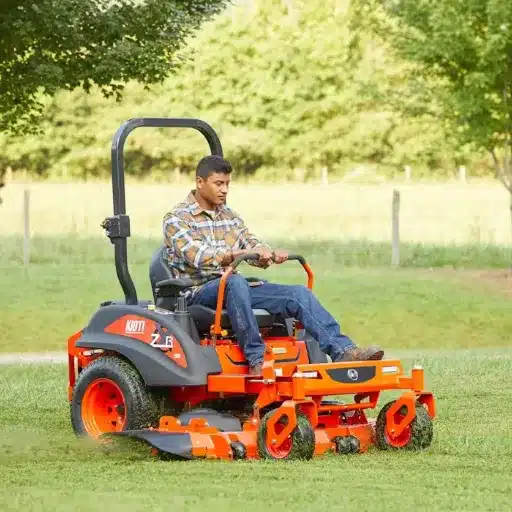
Proper Blade Maintenance
Examine the mower blades regularly for signs of wear, dullness, or damage. A sharp blade is proper for clean and even cutting, while an unsharpened one increases the strain on the engine of a mower. The blades should be replaced or sharpened at least twice each season, or more frequently if heavy use or tough, rough terrain is involved.
Optimal Storage Practices
The zero turn should always be stored inside, away from moistur,e to prevent rust and corrosion. A good dust cover should be used if it is not possible to store the machine inside.
Fuel and Oil Quality
Always use high-quality fuel to minimize deposits and ensure optimal performance. Also, check the oil level and its condition; change oil according to the manufacturer’s instructions. This will prevent the eternity from extra wear and assist genuine operation.
Regular Belt Inspection
Check belts for cracks or fraying, as these worn-out belts can impair the functionality of the machine and are dangerous because of sudden breakages. Replace belts whenever necessary to keep the smooth operation and avoid interruptions while working.
Proper Blade Care Techniques
To ensure that blades perform well and last as long as possible, proper maintenance is essential. First of all, clean the blades after every use, whilst removing debris, dirt, or any form of buildup which can reduce performance. Use a stiff brush or a damp cloth to clean them thoroughly, and avoid using abrasive cleaning materials on the blade surface. With sharpening, an equally important aspect is that a dull blade could put undue strain on the machinery, thus lessening operation and consumption of fuel or energy. The sharpening of the blade for an edge while retaining the Basic Possible Angle is the operation for which a bench grinder or a sharpening stone, corresponding to the blade material, should be employed. Also, check the blade for wear, cracks, or warps, as such characteristics will affect the safety and functioning. Fixing cannot be undertaken. Replace the damaged blades immediately to avoid accidents or mechanical problems. Proper storage in a dry and secure environment also reduces the rust and corrosive effects on the blade, thus increasing its useful life.
Storage Tips for Longevity
Control Humidity Levels
Store tools in an environment where the humidity is always lower than 50% to avoid rust and corrosion. If ever high moisture or temperature fluctuations occur, use a dehumidifier. It is academic; metal tools will corrode about 70% slower when stored in a controlled atmosphere than when exposed to damp conditions.
Use Protective Coatings
Before storage, a thin layer of oil or rust-preventive spray should be applied over every metal surface. It acts as a moisture and air barrier since moisture and air exposure cause oxidation and degradation of metals.
Organize with Proper Tool Holders
Use tool racks, pegboards, or storage bins for better arrangement and to prevent accidental damage. Tools left lying around in a dump can have a few scratches or wear and can even cause structural damage with time if left as is.
Avoid Direct Sunlight Exposure
Sunlight spells death for plastic and rubber, and even paints are susceptible to UV rays. Always store tools in a shaded or enclosed area to avoid this.
Inspect and Maintain Storage Areas
Inspect the storage locations for signs of pest infestation, leaks, or structural failure. For instance, a rat will chew through electrical wiring or through insulation because usually rats eat wood: those mutilations mean expensive repairs and, above all, strong hazard!
Temperature Regulation
Maintain indoor temperature ideally between 50°F and 75°F whenever feasible. Too much temperature fluctuation will put stress on the material and will only worsen wear and tear.
Reference Sources
-
Measurement of the Moment of Inertia for a Zero Turning Radius Mower
- Summary: This study investigates the moment of inertia (MI) of zero-turn radius (ZTR) mowers, focusing on their unique weight distribution and its impact on maneuverability and stability.
-
Toward Net Zero: Strategic Integration of Electric Mowers into Landscape Maintenance Operations
- Summary: This paper evaluates the integration of electric zero-turn mowers, such as the Mean Green Evo-74 and Gravely Pro Turn EV, into landscape maintenance.
Frequently Asked Questions (FAQs)
Q: What is the Best Zero Turn Mower for Large Yards?
A: The best commercial-grade mower for wide swaths usually offers speed, efficiency, and durability. Users typically look for models that can deal with 1 to 2-acre size land fairly effortlessly-John Deere and Cub Cadet brands come to mind. A gas-powered zero-turn mower usually harbors a big engine that can cut up to 7 mph. The 0-degree turning radius lends super-reflexive maneuverability around obstacles, and in turn promotes the speed and efficiency in squaring away the lawn. Durable performance-wise commercial mowers could come into play in rough terrain, with hilly landscapes that are a-to-an. When searching for the best zero-turn, find one with a strong steel cutting deck so it will last.
Q: What Features Should I Look for in a Zero Turn Lawn Mower?
A: While focusing on the comparison of the best zero-turn lawn mower, below are factors to be considered: Ideally, a lawn mower comes with a strong engine like Kohler or diesel, as they augment performance and efficiency. Another to consider is the cut quality, for it varies widely between a Toro and a Scag. A wider cutting deck, something in the range of 42 inches and more, significantly reduces mowing time, especially if you have vast areas of lawn to work on. Another factor is the mower’s ease of operation; many of the best zero-turn mowers are quite easy to maneuver and thus good for residential turf mowing. Finally, ensure the mower is protected by a good warranty and maintenance support.
Q: How Does a Zero Turn Mower Compare to a Riding Lawn Mower?
A: A zero turn mower largely differs from the usual riding lawn mower mainly in cutting efficiency and maneuverability. Designed for intricate mowing with the ability to turn on a dime, a zero turn has a zero-degree turning radius and especially proves useful in maneuvering around trees, flower beds, and other obstacles in your lawn. In contrast, a riding lawn mower is usually a less agile and more traditional cutting tool, best suited for large open grounds. Besides, zero turn mowers generally run at a faster pace, reducing in half the time duration required for maintaining a large lawn. Both types of mowers have their advantages, but ultimately, the choice of whether the mower serves you and your land better depends on the peculiarity of the terrain and lawn care needs.
Q: Are Electric Zero Turn Mowers a Good Option?
A: Electric zero-turn mowers are gaining attention because they are environmentally friendly and need the least routine maintenance compared to gas-powered mowers. They make an excellent option among residential zero turns for those with relatively smaller to medium-sized lawns. Some electric zero turns have very impressive performance capabilities, with the ability to cover up to 2 acres in a single charging session, which is compatible with lawn care for an average home. Conversely, consideration should be given to charging duration and battery life, as some may require constant recharging for greater use. Top-notch companies such as Cub Cadet Ultima are at the forefront of Electric Zero-Turn development, supplying powerful options to the gas brethren. So, on the whole, an electric zero turn mower may be a fantastic device for the ecologically aware homeowner.



